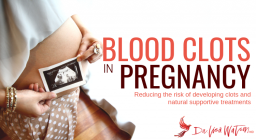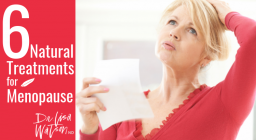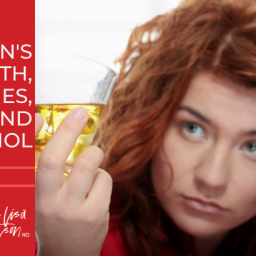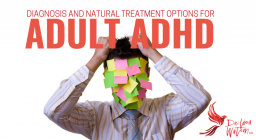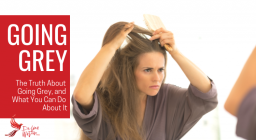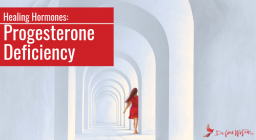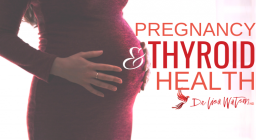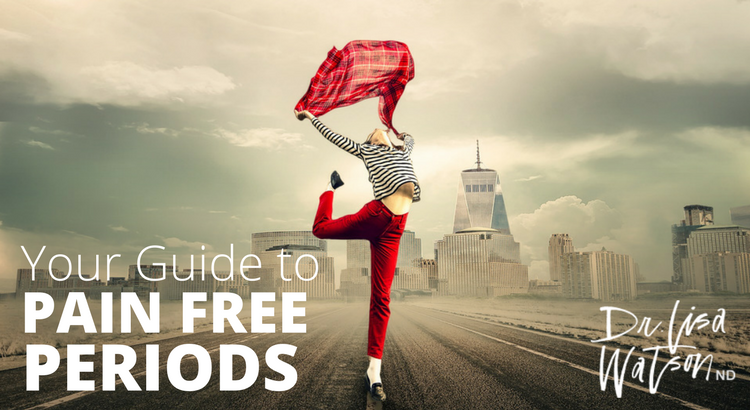
Painful periods and menstrual cramps
This is the one article series a lot of women have been asking for – what to do about painful periods and period cramps. Half of women experience pain during their menstrual cycles (and around 90% of teen girls) and 1 in 10 women have periods that are so painful they are unable to work or function for up to a week each month.
So what are we going to do about it ladies? I’m not one to just take things as they are – and I don’t want you to either! Let’s learn a bit more about why some of us get such significant pain during our periods, and then we’ll talk about what we can DO to lessen our pain, and live our amazing lives, every damn day of the month.
Dysmenorrhea
The medical term for painful periods is dysmenorrhea. And it encompasses anything from cramps in the lower abdomen to low back pain, pain/pulling sensation in the inner thighs, diarrhea, nausea, vomiting, dizziness, headache and fatigue. Dysmenorrhea is basically anything miserable during a period that interferes with our ability to function.
There are two different types of dysmenorrhea: primary and secondary.
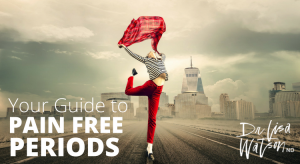 Primary dysmenorrhea – no underlying cause, just the result of our body’s natural physiology
Primary dysmenorrhea – no underlying cause, just the result of our body’s natural physiology
Secondary dysmenorrhea – occurs as a result of something else – an underlying condition that can lead to pain during periods – endometriosis, ovarian cysts, pelvic inflammatory disease, uterine fibroids, a narrow cervical opening, etc.
Ultimately we need to understand if there is a secondary cause for the painful periods – and treat that. If your periods started being painful right from your first period in your teens, then it’s most likely primary dysmenorrhea. If you had years of pain-free periods, then a full workup for secondary dysmenorrhea is highly recommended. In either case read on and learn more about what you can do to help yourself manage your period pain.
Why Are My Periods Painful?
A couple of specific physiological changes occur at the start of our periods that contribute to pain during periods.
Just before the start of our period flow the blood supply, and thus oxygen delivery, to the uterus is significantly restricted. In order for the lining of the uterus to be shed there is also an increase in the production and release of inflammatory compounds (called prostaglandins) that stimulate uterine contractions. This combination of low oxygen delivery (called ischemia), inflammatory prostaglandins, and contractions causes the pain associated with our periods.
But Dr. Lisa, not every woman experiences painful periods (lucky b*tches)

Yes, dear reader, this is absolutely true! Some factors need to be considered in those of us who do have painful periods.
Women who have painful periods produce on average 8-13 times more prostaglandins than women who do not experience painful menstrual cramps (more on this in the treatment section). Women who do not ovulate during their menstrual cycle also do not have painful periods – the drop in progesterone is what triggers the inflammatory prostaglandin production and painful uterine contractions. As we get older and make less progesterone, we also can experience much less painful periods.
And lifestyle makes a difference for some women too. Women who already have poor oxygen delivery to the uterus – smokers, women who are overweight, women who are sedentary – they tend to have cramping that is either more intense, or lasts longer, or both.
Treatment of Painful Periods and Menstrual Cramps
There is a LOT that we can do to manage our menstrual cramps. Many of the lifestyle and natural treatments are very effective for reducing pain during our periods and can give women back their vitality every day of the month. Ultimately it can be a trial and error to determine what will be the most effective for you, and working with a Naturopathic Doctor can accelerate your progress.
Below I’ve given you my top ten lifestyle modifications for managing period cramps. Once you’ve made those changes, check out my article on Natural Treatments for a Pain Free Period. And then when you’re empowered with all that knowledge, book an appointment so we can put together the very best plan for you.
Lifestyle for Pain Free Periods
Studies have found a number of factors that can contribute to painful periods – women who eat more sugar, junk food, fast food and saturated fats tend to have more painful periods. Women who exercise regularly (not just during their periods) tend to have less menstrual cramps. Using tampons can make menstrual cramps worse, as can constipation or food sensitivities.
Below you’ll find my top ten lifestyle tips for reducing period pain
-
Cut the sugar
Not really a newsflash, but sugar makes just about everything worse – including period cramps. Sugar interferes with the body’s ability to absorb and use B vitamins and minerals, both of which can worsen muscle tension and increase the force of uterus cramps. So quit it – you already knew you should.
-
Ditch dairy
Prostaglandins, those inflammatory molecules produced by our uterus that cause pain, are made in our body from arachidonic acid. Arachidonic acid comes mostly from our diet, in particular dairy products (although poultry is also a high source of arachidonic acid). Reducing or eliminating dairy is a great idea for women who get period pain – and it has been suggested that eliminating dairy may provide a significant benefit (with no other treatments) for up to one-third of women with painful periods!
Ladies, I get it. The urge to have a lovely glass of wine to dull the cramping and misery, and really, you just want it. But I’m a teller of truths – alcohol is a no-go for painful periods. Alcohol is well known to deplete B vitamins as well as muscle-relaxing minerals such as magnesium. Not only that – it interferes with the liver’s ability to metabolize hormones. All of these contribute to more cramping and heavier periods (which lead to more clots, which trigger more uterine spasms, which causes more pain…)
-
Skip the salt
Salt is something many people think they are avoiding, but that stuff sneaks into everything. While I’m not opposed to a bit of sea salt on my edamame, the primary source of salt in the diet is processed or packaged foods. Salt can increase fluid retention, which can worsen bloating and discomfort as well as period pain. So skip the salt and season with spices instead.
-
Load up on the legumes, nuts and seeds
Nuts and seeds are excellent sources of minerals like magnesium and calcium – both of which can lessen muscle tension and reduce the pain of menstrual cramps. Additionally, eating a diet higher in plant proteins and lower in animal proteins has been found to reduce the incidence of dysmenorrhea. So skip the chicken and have some chickpeas and cashews instead.
-
Eat your veggies
Really, is there anything vegetables CAN’T do? They are the most important component of the human diet, and eating more of them cures just about everything – including period cramps. Women who eat more fruits and vegetables have the lowest rates of painful periods. Vegetables are excellent sources of minerals, like calcium and magnesium, as well as fiber to reduce bloating and discomfort.
-
Understand your food sensitivities
Wait, what? Food sensitivities? What do those have to do with my period cramps?
It turns out, quite a lot!
Food sensitivities can damage the lining of the digestive tract, altering the absorption of B vitamins and minerals, resulting in more cramping. Additionally, food sensitivities can cause increased production of inflammatory molecules, leading to more inflammation (and more pain) when period time rolls around. Add to the mix the irregular bowel movements that can result from food sensitivities and you have the perfect storm for period pain. So if you’ve ever wondered if you have food sensitivities and you get painful periods, I’d considering having the food sensitivity test. It may be just what you need.
-
Exercise regularly
Exercise improves blood flow to, and from, the uterus. Exercise also helps to alter the production of prostagandins, leading to less pain. And it’s not just exercise during your period that helps – most studies show that women who exercise regularly have less painful periods than those who don’t. There are also some specific exercises that have been found to help manage period pain – you can read more about those here.
-
Toss the tampons
We are entering a new age of period empowerment. No longer are we having to choose between bulky pads and bleached cotton tampons. There are so many options now for women to comfortably accommodate their periods.

From the Diva Cup to Thinx period panties, to all natural pads that are thin and comfortable. Women who use tampons have more painful periods than those who don’t, and most of those tampons are full of chemicals that can be absorbed across the mucosal barrier of the vaginal canal – not a good thing! So toss those tampons and join women in the age of period empowerment!
-
Try a Natural Approach
While we may be tempted to manage our period pain with Midol and Advil and other pain killers, there are a number of natural supplements – nutrients and botanical (plant) medicines that can provide amazing relief. And without the side effects of those pain killers as well! Start by reading my article on Natural Treatments for Pain-Free Periods and then work with a Naturopathic Doctor to personalize a treatment plan that can give you relief from your menstrual cramps.



